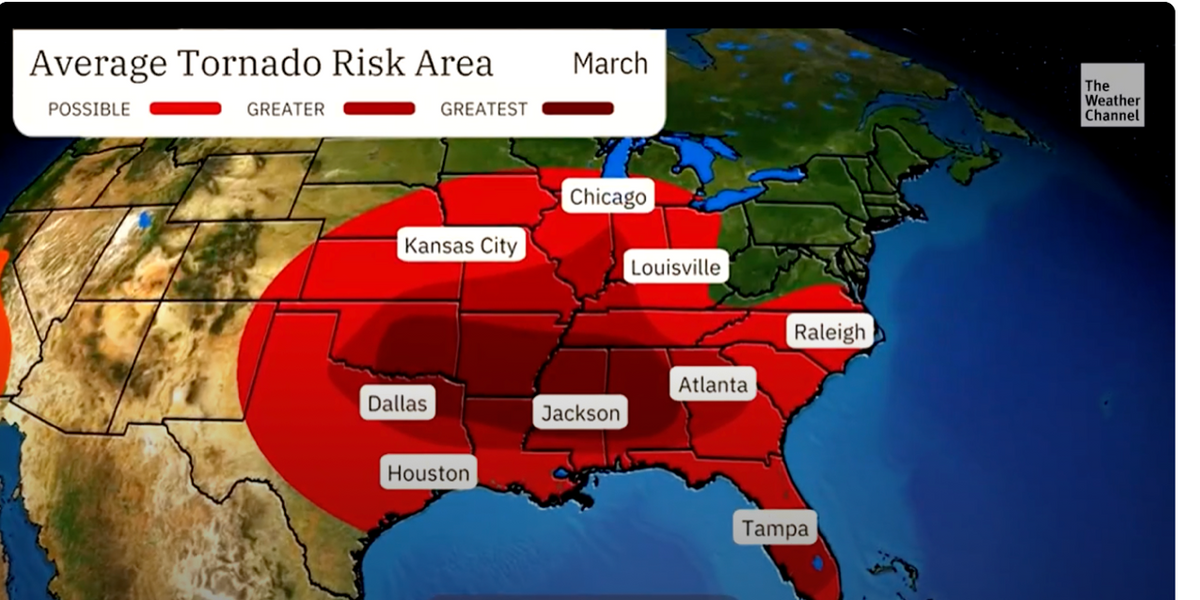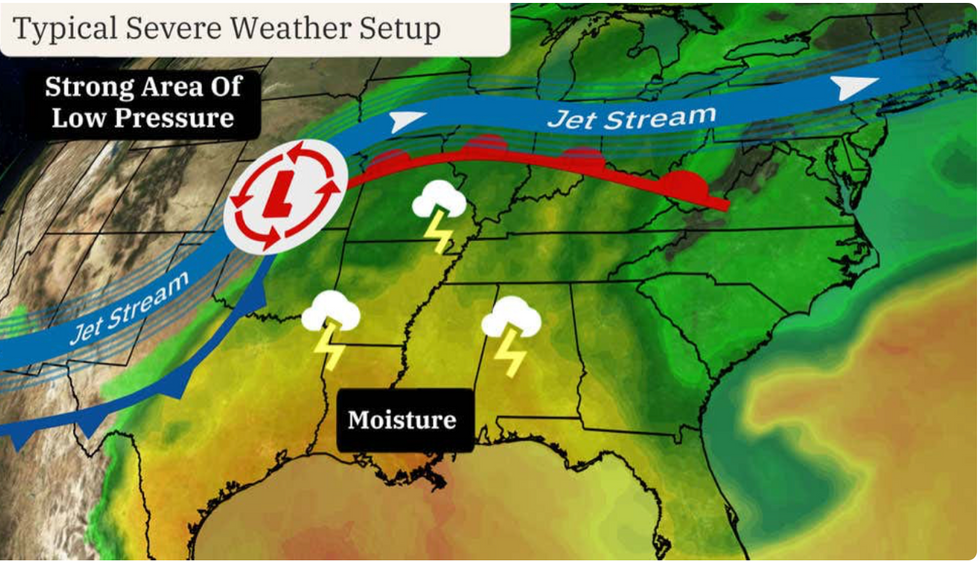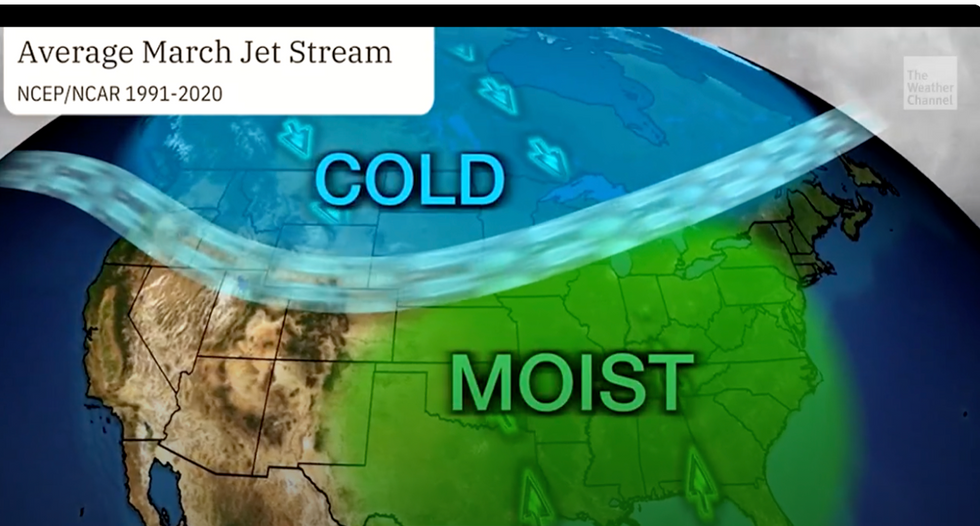Extreme heat pushing temperatures across the southern United States to 90F threatens an unusually fierce tornado season.
Hot air clashing with cold Arctic air dipping into northern States are providing the perfect ingredients for storm formation.
Southern and south-eastern regions are prime target areas for tornadoes during spring, but unusual weather this year could drive them further north.
March marks the start of twister season which lasts into summer, as cold winter air from the north meets hotter air from the south.

How the weather drives tornadoes
The Weather Channel
This year could spawn more of the destructive storms than usual, thanks to an exceptional heatwave gripping the south.
Jim Dale, US weather correspondent and meteorologist for British Weather Services, said: “This tornado season will be interesting, as this heat in the south hits the cold air in the north.
“The temperatures we are seeing across the south of the United States are verging on ridiculous, with highs in the 90Fs in Texas and southern states.
“When air masses meet, they provide the ingredients for tornado formation, and with the contrast in temperatures we are seeing this year, there is every likelihood we are in for an unusually active season.”
The past two years have seen particularly active tornado seasons, with 234 recorded in 2022, and 206 in 2023.
Cooler months tend to coincide with fewer tornadoes with between 14 and 30 recorded during chilly springs.
Weather Channel meteorologist Danielle Banks said: “Spring is a volatile weather season, including the threat of tornadoes.
LATEST DEVELOPMENTS:

Cold and warm, moist air masses drive the jet stream and tornado formation
The Weather Channel
“On average, the US sees 96 per cent of its tornadoes in March, and it’s the ramp up to the peak tornado seasons of April and May.
“The past two years show how unpredictable March can be. In March 2022, there were 234 tornadoes in the US, the most in any March dating back to 1950.
“March 2023, saw 206 tornadoes, again, way above average. On the flip side, March 2013, 14 and 15 each saw 20 tornadoes of fewer.
“Those three Marches were also colder than average, and that’s less fuel for severe storms.”
Tornado season is given a supercharge at the start of spring as the jet stream is fired up by large temperature contrasts across north and south.
Humid, warm air across the south creates a ‘volatile’ mix of drivers for tornadoes, according to The Weather Channel.
Ms Banks said: “The highest risk areas for March tornadoes are in the south, from Georgia, westward into Alabama and Mississippi, the Arklatex and Oklahoma.
“But later in the month, that risk area expands north into the Central Plains and the Midwest.
“In March, you get warmer, more humid air over the south, and sometimes into the nation’s midsection, colliding with the jet stream which still packs a punch, as winter turns to spring.”
May sees the most tornadoes, and these most frequently hit the south, including Alabama, Georgia, Mississippi, Louisiana, northern Texas and Oklahoma.
However, an early surge of heat from the Gulf of Mexico could help to drive the storms further north.
Weather Channel meteorologist Chris Dolce said: “In early spring, the jet stream is still strong, owing to the still-sharp temperature contrast across the country between lagging winter cold and building warmth.
“Increasingly in March, warmer and more humid air is in place over the South and is occasionally pulled farther north into the Plains and Midwest.
“This volatile mix of ingredients can ignite severe thunderstorms and tornadoes.”













Post comments (0)